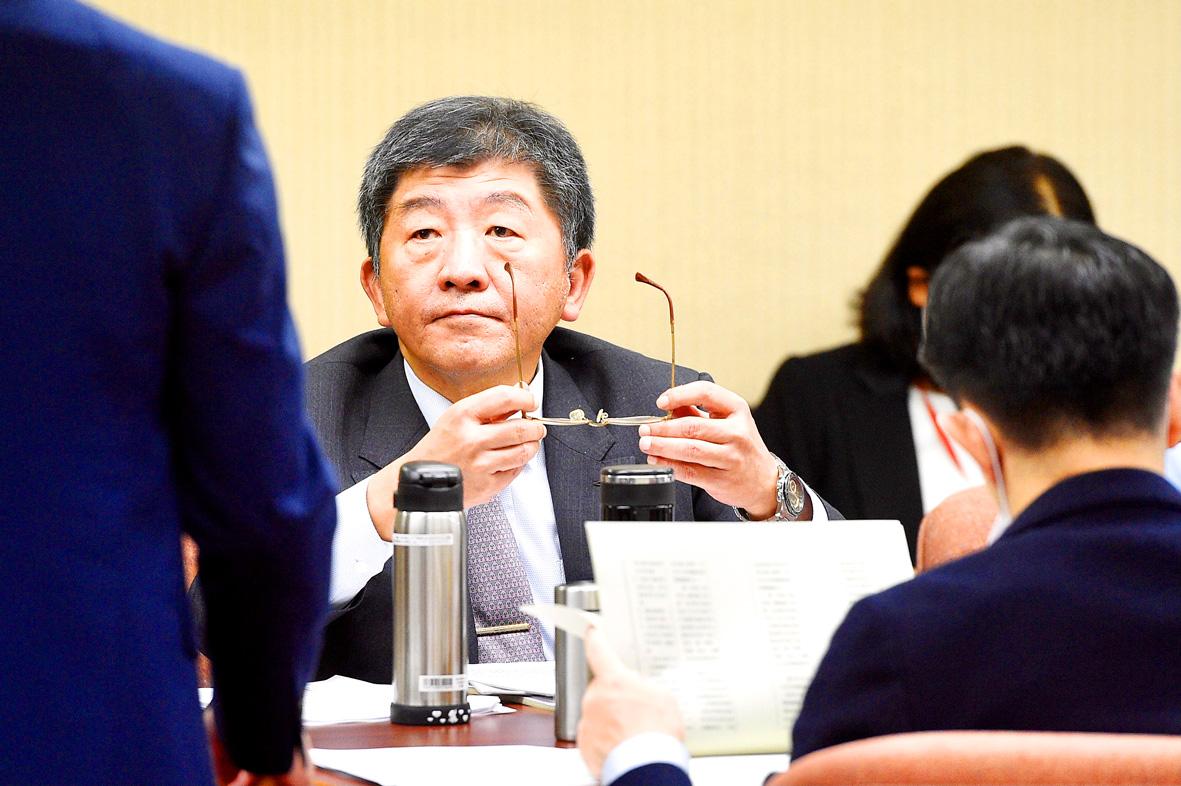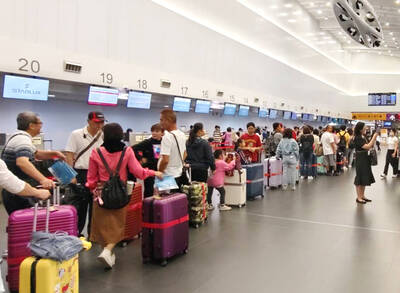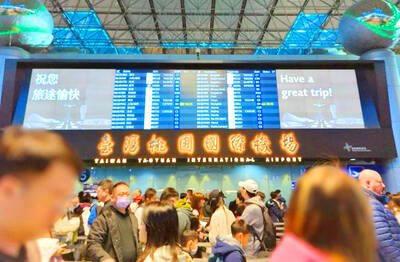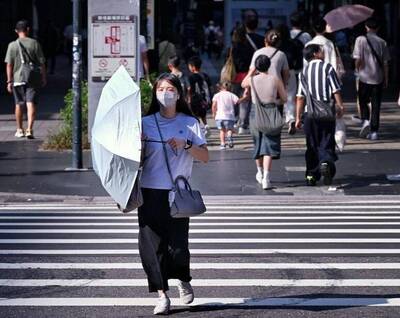Not all US pork contains ractopamine and just because pork contains the additive does not mean it is poisonous, Minister of Health and Welfare Chen Shih-chung (陳時中) said yesterday.
Chen made the remark at the Legislative Yuan in response to requests for comment on the annual “Autumn Struggle” (秋鬥) labor protest march, which on Sunday focused on rejecting the government’s plan to allow imports of US pork containing ractopamine, from Jan. 1.
The Chinese Nationalist Party (KMT) and the Taiwan People’s Party joined in support.

Photo: George Tsorng, Taipei Times
The Consumers’ Foundation has also said that more than 140,000 people had signed its petition against allowing imports of pork containing the drug.
The rally’s organizers said that more than 50,000 people attended the march, although Chen said it was uncertain if that many people opposed ractopamine pork.
“In addition, the protesters were expressing their concerns on multiple issues, so we cannot say that all 50,000 people were against one certain policy,” he said. “Nonetheless, we will respect the expression of public opinion.”
“Just as most people understand that not all US beef contains ractopamine ... US pork does not mean pork containing ractopamine, and pork containing ractopamine is not equal to poisonous pork,” he added.
The government is responsible for ensuring food safety and would require country of origin labeling for meat imports, he said, adding that it would also respect people’s economic behaviors.
At a meeting of the legislature’s Social Welfare and Environmental Hygiene Committee, KMT Legislator Chiang Wan-an (蔣萬安) said that pork containing ractopamine residue only makes up about 22 percent of the US’ total pork production, but if Taiwan plans to only request country of origin labeling on imported pork, it might cause Taiwanese consumers to reject all US pork.
Chen said that the government hopes that US authorities would understand that allowing imports of US pork containing ractopamine might not necessarily benefit US pork exports, as Taiwanese consumers might be suspicious of all US pork, including the nearly 80 percent without the additive.

Three Taiwanese airlines have prohibited passengers from packing Bluetooth earbuds and their charger cases in checked luggage. EVA Air and Uni Air said that Bluetooth earbuds and charger cases are categorized as portable electronic devices, which should be switched off if they are placed in checked luggage based on international aviation safety regulations. They must not be in standby or sleep mode. However, as charging would continue when earbuds are placed in the charger cases, which would contravene international aviation regulations, their cases must be carried as hand luggage, they said. Tigerair Taiwan said that earbud charger cases are equipped

Foreign travelers entering Taiwan on a short layover via Taiwan Taoyuan International Airport are receiving NT$600 gift vouchers from yesterday, the Tourism Administration said, adding that it hopes the incentive would boost tourism consumption at the airport. The program, which allows travelers holding non-Taiwan passports who enter the country during a layover of up to 24 hours to claim a voucher, aims to promote attractions at the airport, the agency said in a statement on Friday. To participate, travelers must sign up on the campaign Web site, the agency said. They can then present their passport and boarding pass for their connecting international

Temperatures in northern Taiwan are forecast to reach as high as 30°C today, as an ongoing northeasterly seasonal wind system weakens, the Central Weather Administration (CWA) said. CWA forecaster Tseng Chao-cheng (曾昭誠) said yesterday that with the seasonal wind system weakening, warmer easterly winds would boost the temperature today. Daytime temperatures in northern Taiwan and Yilan County are expected to range from 28°C to 30°C today, up about 3°C from yesterday, Tseng said. According to the CWA, temperature highs in central and southern Taiwan could stay stable. However, the weather is expected to turn cooler starting tonight as the northeasterly wind system strengthens again

Taiwan sweltered through its hottest October on record, the Central Weather Administration (CWA) said yesterday, the latest in a string of global temperature records. The main island endured its highest average temperature since 1950, CWA forecaster Liu Pei-teng said. Temperatures the world over have soared in recent years as human-induced climate change contributes to ever more erratic weather patterns. Taiwan’s average temperature was 27.381°C as of Thursday, Liu said. Liu said the average could slip 0.1°C by the end of yesterday, but it would still be higher than the previous record of 27.009°C in 2016. "The temperature only started lowering around Oct. 18 or 19